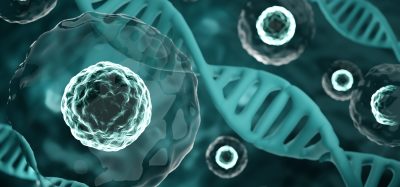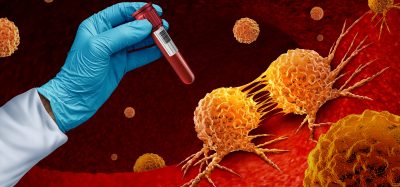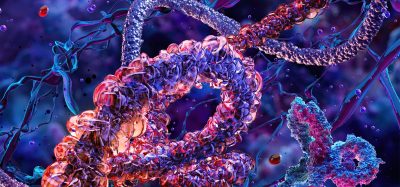B cell discovery could supercharge future vaccine development
Posted: 31 March 2025 | Drug Target Review | No comments yet
New research reveals how B cells balance mutation and clonal expansion to refine their antibodies. This discovery could lead to more targeted and effective vaccine designs for various diseases.


The ability of a vaccine to generate long-lasting, high-affinity antibodies depends on a delicate balance within the immune system. When exposed to a vaccine or pathogen, B cells rapidly mutate, attempting to refine their antibodies for maximum effectiveness. However, each mutation is a gamble, and while some improve antibody affinity, most mutations either degrade or eliminate function. This asks the question: how do high-affinity B cells beat the odds?
New research, published in Nature, provides insight into this mystery. It suggests that B cells strategically preserve advantageous mutations by pausing the mutation process under certain conditions. These findings have significant implications for vaccine development, potentially leading to strategies that optimise immune responses for different diseases.
The downsides of evolution
Vaccines and infections both prompt the formation of germinal centres, which are specialised immune structures where B cells undergo rapid mutation and selection. This process is inherently risky, as mutations are random, the chance of generating harmful mutations far exceeds the likelihood of producing beneficial ones. According to classical evolutionary models, high-affinity B cell lineages should degrade over time due to the accumulation of harmful mutations.
Researchers suspected a built-in safeguard that enables high-affinity B cells to retain their advantageous traits
Yet, empirical data shows that germinal centres consistently produce highly effective antibodies. The traditional explanation, that B cells continuously win an evolutionary lottery, seemed unlikely, so researchers suspected a built-in safeguard that enables high-affinity B cells to retain their advantageous traits while avoiding the risks of continued mutation.
The mechanism of B cell banking
The study revealed that high-affinity B cells follow a unique strategy: instead of continuously mutating, they can enter a phase of clonal expansion, copying themselves while minimising mutation risks. This discovery was made using single-cell RNA sequencing, which showed that high-affinity B cells proliferate more but mutate less frequently per division.
Further investigation using flow cytometry found that these cells receive enhanced support from T cells. This extra assistance allows them to move through the cell cycle more rapidly, particularly bypassing the G0/G1 phase where hypermutation occurs. In contrast, lower-affinity B cells remain in extended hypermutation cycles, continuously generating new variations in the hope of producing a superior antibody.
The findings were validated through mouse immunisation studies involving model antigens and the receptor-binding domain of the SARS-CoV-2 spike protein, reinforcing the evidence for this strategic shift in B cell behaviour.
Implications for vaccine development
This discovery provides new opportunities for tailoring vaccine strategies to specific pathogens. For diseases like HIV, where effective antibodies require extensive mutation due to the virus’s rapid evolution and protective glycan shield, vaccines could be designed to extend the hypermutation phase before allowing clonal expansion. This would enhance the likelihood of generating broadly neutralising antibodies.
This discovery provides new opportunities for tailoring vaccine strategies to specific pathogens
Conversely, for diseases where stable, high-affinity antibodies are needed quickly, such as influenza or coronaviruses, vaccines might be designed to encourage an early shift to clonal expansion, ensuring rapid and effective immune responses.
“Our work shows how high-affinity B cells can bank really advantageous mutations by essentially cloning themselves rather than continuing to mutate,” explains Julia Merkenschlager, first author of the study and visiting assistant professor in Michel C. Nussenzweig’s Laboratory of Molecular Immunology at Rockefeller University. “Perhaps we will soon be able to tailor vaccines to tip the scales either toward mutation or cloning.”
The next steps for researchers will involve validating these findings in human subjects and exploring how vaccine adjuvants or other strategies can control the balance between mutation and clonal expansion. If successful, this approach could revolutionise vaccine development, leading to more efficient and targeted immunisation strategies.
Conclusion
The ability to manipulate the immune system’s mutation-versus-cloning balance represents a paradigm shift in vaccine design. By understanding how B cells either gamble on new mutations or bank their best ones, scientists may develop more effective vaccines tailored to different pathogens. Whether extending the hypermutation phase for elusive targets like HIV or accelerating clonal expansion for rapid protection against seasonal viruses, this research opens new doors for precision immunology.
As Merkenschlager explains: “Now that we have an idea of how to control what a cell will bank versus what it will gamble, we can begin to think about how to design a more effective HIV vaccine.”
Related topics
Molecular Biology, Vaccine, Vaccine development, Virology
Related organisations
Rockefeller University
Related people
Julia Merkenschlager, Michel C. Nussenzweig







